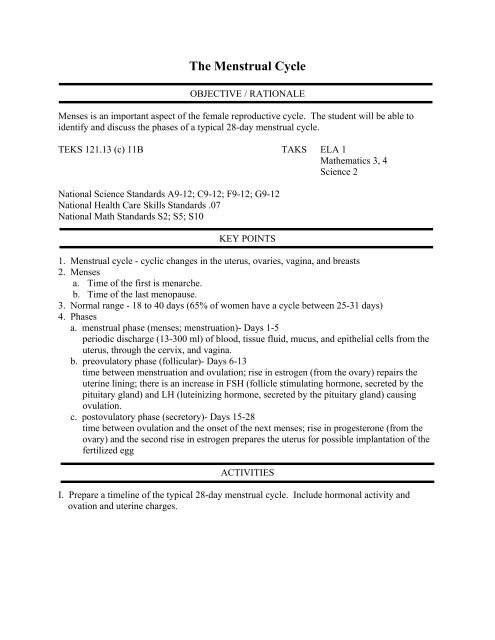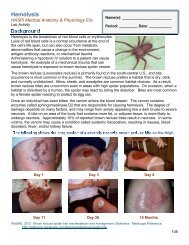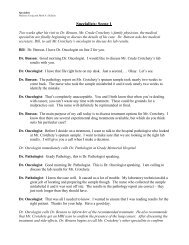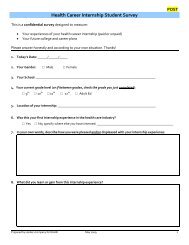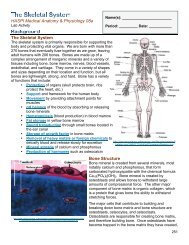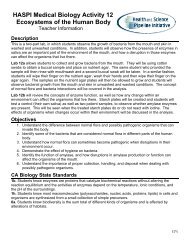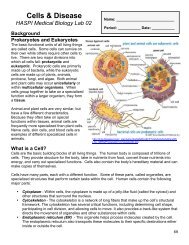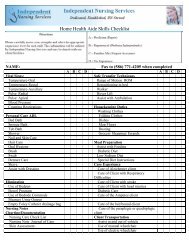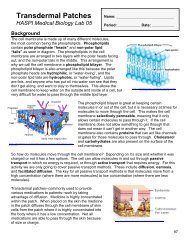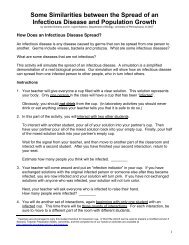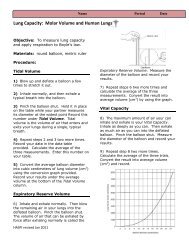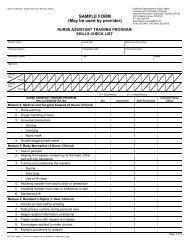Create successful ePaper yourself
Turn your PDF publications into a flip-book with our unique Google optimized e-Paper software.
<strong>The</strong> <strong>Menstrual</strong> <strong>Cycle</strong><br />
OBJECTIVE / RATIONALE<br />
Menses is an important aspect of the female reproductive cycle. <strong>The</strong> student will be able to<br />
identify and discuss the phases of a typical 28-day menstrual cycle.<br />
TEKS 121.13 (c) 11B TAKS ELA 1<br />
Mathematics 3, 4<br />
Science 2<br />
National Science Standards A9-12; C9-12; F9-12; G9-12<br />
National Health Care Skills Standards .07<br />
National Math Standards S2; S5; S10<br />
KEY POINTS<br />
1. <strong>Menstrual</strong> cycle - cyclic changes in the uterus, ovaries, vagina, and breasts<br />
2. Menses<br />
a. Time of the first is menarche.<br />
b. Time of the last menopause.<br />
3. Normal range - 18 to 40 days (65% of women have a cycle between 25-31 days)<br />
4. Phases<br />
a. menstrual phase (menses; menstruation)- Days 1-5<br />
periodic discharge (13-300 ml) of blood, tissue fluid, mucus, and epithelial cells from the<br />
uterus, through the cervix, and vagina.<br />
b. preovulatory phase (follicular)- Days 6-13<br />
time between menstruation and ovulation; rise in estrogen (from the ovary) repairs the<br />
uterine lining; there is an increase in FSH (follicle stimulating hormone, secreted by the<br />
pituitary gland) and LH (luteinizing hormone, secreted by the pituitary gland) causing<br />
ovulation.<br />
c. postovulatory phase (secretory)- Days 15-28<br />
time between ovulation and the onset of the next menses; rise in progesterone (from the<br />
ovary) and the second rise in estrogen prepares the uterus for possible implantation of the<br />
fertilized egg<br />
ACTIVITIES<br />
I. Prepare a timeline of the typical 28-day menstrual cycle. Include hormonal activity and<br />
ovation and uterine charges.
MATERIALS / RESOURCES<br />
<strong>The</strong> following Internet sites will provide useful information:<br />
1. www.fda.gov/opacom/catalog/ots_mns.html<br />
2. www.matweb.hcuge.ch/matweb/endo/Lectures_8 th _PGC/CYCLE/ppframe.htm<br />
3. www.people.virginia.edu~rjh9u/mescyc2.html<br />
4. http://ataschool.eduweb.co.uk/middlecrof.bmenstru.htm<br />
5. www.medscand.com/cytofocus/menstral.htm<br />
6. http://my.webmd.com/content/dmk/dmk_article_4006<br />
7. http://healthwatch.medscape.com/medscape/p/G_Library/article.asp?ReclD=2025618<br />
ContentType=Library<br />
Project Rubric<br />
ASSESSMENT<br />
ACCOMODATIONS<br />
For reinforcement, the student will research and report on the factors that alter a normal<br />
menstrual cycle.<br />
For enrichment, the student will review literature on current research regarding hormone<br />
replacement.<br />
REFLECTIONS


